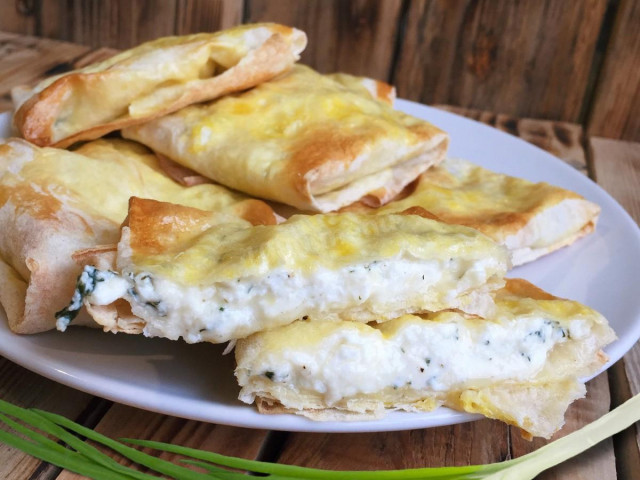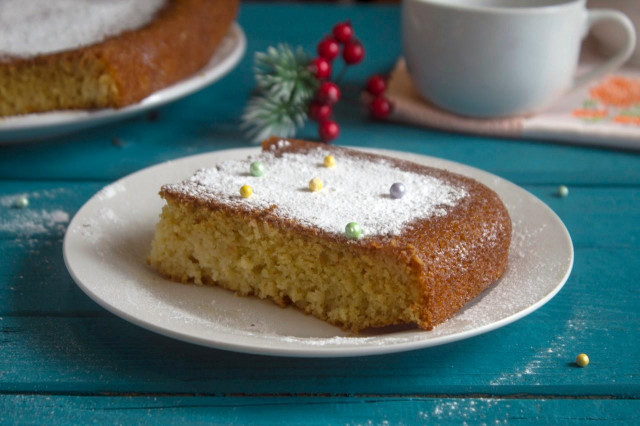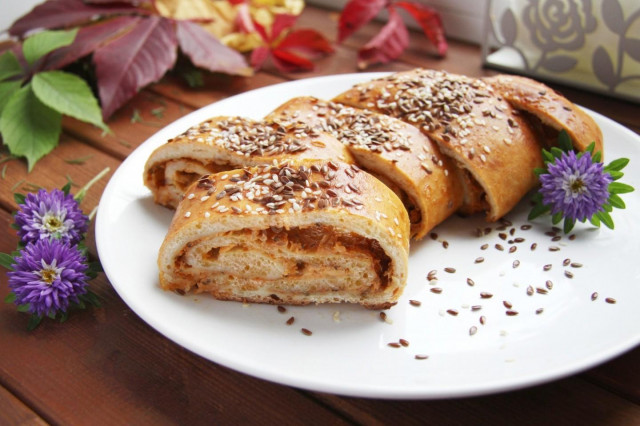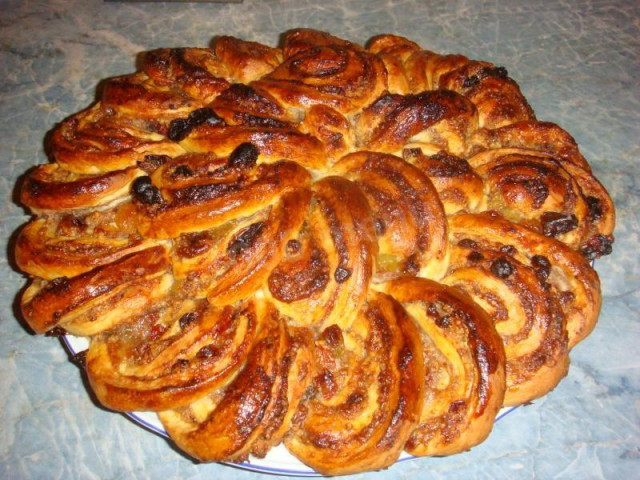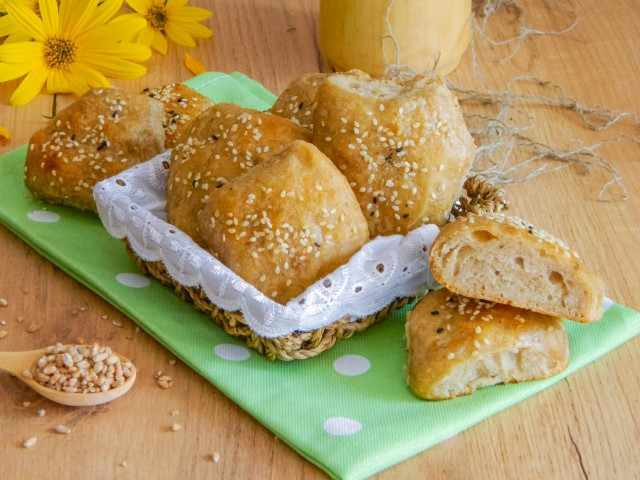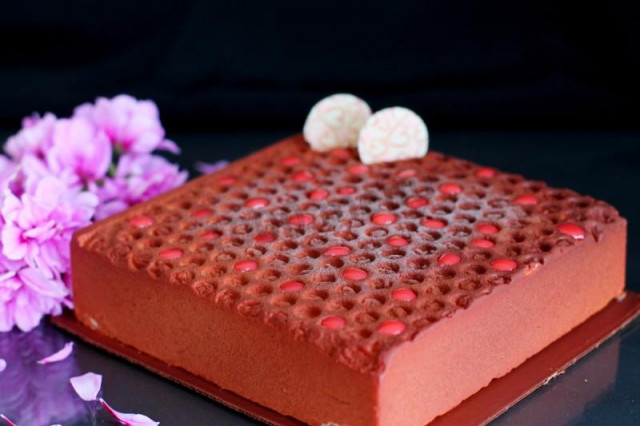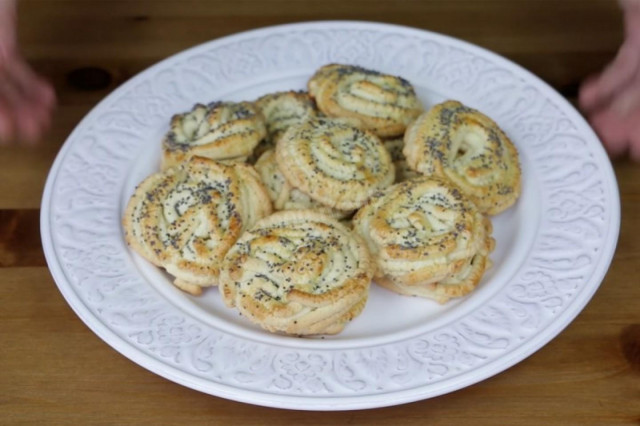Composition / ingredients
Cooking method
In order to prepare envelopes from lavash, you will need the lavash itself - thin unleavened sheets, which you can, of course, cook yourself if you want, and you can buy at any supermarket in the city. Cottage cheese is best taken not too greasy and watery. To prevent the envelopes from getting too wet, the cottage cheese should be somewhat dry. If you use homemade cottage cheese, then before using it, it is better to wrap it in a piece of clean gauze and squeeze the whey out of it.
So, for this dish you will need an oven. Therefore, first of all it is necessary to turn on the oven and set the temperature to 180 degrees Celsius. The mode for baking envelopes for more uniform roasting is best suited by heating from above and from below.
In order to prepare the filling, you should put the cottage cheese in a bowl and mash it with a fork. Hard cheese (take any to your liking) should be grated, not too finely. Mix cottage cheese and grated cheese together, add a little salt and ground black pepper. Wash the dill with cold water and dry it on a paper towel. Then cut off the stems, and finely chop the greens. Add dill to the filling and mix well again.
Pita bread with kitchen scissors cut into 6 identical pieces. Distribute the curd filling on each part of the pita bread equally and wrap them in an envelope.
Put baking paper on a baking sheet and put all the envelopes on it.
Beat the egg separately in a deep dish with a whisk and lubricate all the envelopes of pita bread with a special brush.
Put the baking sheet in the preheated oven for about 8-10 minutes so that they are browned and covered with a golden crust.
As soon as the envelopes are ready, use a spatula to transfer them to a beautiful plate and immediately serve them on the table. They are especially delicious while hot and the cheese is flowing inside.
Bon appetit!
Calorie content of the products possible in the composition of the dish
- Cottage cheese of 40% fat content - 466 kcal/100g
- Cottage cheese of 20% fat content - 233 kcal/100g
- Cottage cheese of 18% fat content - 226 kcal/100g
- Cottage cheese of 10% fat content - 156 kcal/100g
- Low-fat cottage cheese - 75 kcal/100g
- Cottage cheese with sour cream - 260 kcal/100g
- Fruit cottage cheese - 147 kcal/100g
- Soft dietary cottage cheese - 170 kcal/100g
- Vitalinia cottage cheese - 64 kcal/100g
- Cottage cheese "morning" ( "danone") without sugar - 91 kcal/100g
- Cottage cheese - 156 kcal/100g
- Dutch cheese - 352 kcal/100g
- Swiss cheese - 335 kcal/100g
- Russian cheese - 366 kcal/100g
- Kostroma cheese - 345 kcal/100g
- Yaroslavsky cheese - 361 kcal/100g
- Altai cheese 50% fat content - 356 kcal/100g
- Soviet cheese - 400 kcal/100g
- Cheese "steppe" - 362 kcal/100g
- Uglichsky cheese - 347 kcal/100g
- Poshekhonsky cheese - 350 kcal/100g
- Lambert cheese - 377 kcal/100g
- Appnzeller cheese with 50% fat content - 400 kcal/100g
- Chester cheese with 50% fat content - 363 kcal/100g
- Edamer cheese with 40% fat content - 340 kcal/100g
- Cheese with mushrooms of 50% fat content - 395 kcal/100g
- Emmental cheese with 45% fat content - 420 kcal/100g
- Gouda cheese with 45% fat content - 356 kcal/100g
- Aiadeus cheese - 364 kcal/100g
- Dom blanc cheese (semi-hard) - 360 kcal/100g
- Lo spalmino cheese - 61 kcal/100g
- Cheese "etorki" (sheep, hard) - 401 kcal/100g
- White cheese - 100 kcal/100g
- Fat yellow cheese - 260 kcal/100g
- Altai cheese - 355 kcal/100g
- Kaunas cheese - 355 kcal/100g
- Latvian cheese - 316 kcal/100g
- Limburger cheese - 327 kcal/100g
- Lithuanian cheese - 250 kcal/100g
- Lake cheese - 350 kcal/100g
- Gruyere cheese - 396 kcal/100g
- Ground black pepper - 255 kcal/100g
- Dill greens - 38 kcal/100g
- Armenian lavash - 236 kcal/100g
- Lavash - 277 kcal/100g
- Salt - 0 kcal/100g
- Chicken egg - 80 kcal/100g

